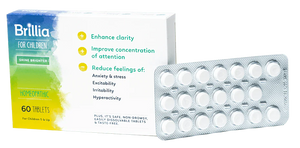Social anxiety is more than just a fear of interacting with people. It is characterized by anxiety in a number of situations and can lead to problems in social relationships and academic performance. Let’s take a look at how social anxiety presents itself, as well as how to help your child cope.
Symptoms of Social Anxiety
Approximately 15 million Americans have social anxiety disorder, with a median age at onset of 13, but in some children as early as age three or four. The defining feature of social anxiety is significant fear or anxiety in social situations, especially when performing or being observed by others. More than just nerves, it is an intense fear of embarrassment and paranoia.
Outward symptoms can include tantrums, clingy behavior, crying and failure to speak. The level of anxiety is outsized in relation to the inciting event. These symptoms last for six months or longer and can significantly impact functioning and performance in school and social situations.
Physical symptoms the child may experience include a shaky voice, racing heart, trembling and nausea. Symptoms can vary, and you know your child best.
How to Help Your Child Cope
The best first step in helping a child cope is to name what they are experiencing. Help your child understand what is causing their emotional response, and use words to describe what is happening. Educating your child about how anxiety impacts our brain and behavior is powerful in helping them process negative emotions.
Relaxation strategies such as deep breathing, counting to 10, guided imagery or progressive muscle relaxation can be taught and practiced at home. Practicing these coping skills in a safe space can make it easier to access these valuable tools when in stressful situations.
Teach your child how to reframe negative thoughts into positive ones. Rather than assuming the worst and personalizing negative feelings, help your child spin them into positive action. For instance, instead of thinking, “the other kids won’t pick me for their team because I’m bad at soccer,” help him replace it with a positive goal such as, “I’m going to practice 30 minutes a day to improve my soccer skills.”
While you can’t always be with your child to help them through anxious feelings, you can help them practice important skills they can use to feel more at ease. Use role-playing at home to practice skills like starting a conversation, introductions, listening and responding, and polite goodbyes.
Anxious kids like to avoid the things that worry them, making excuses to stay home or skip events. This might seem like a good solution in the short-term but only serves to make the anxiety worse over time. The best thing to do is teach your child coping skills and practice, practice, practice so they feel confident using these techniques when they are out on their own.
Seeking Professional Help
For most young people, social anxiety disorder is successfully managed with coping skills and support at home. Additional therapy and treatments may be useful in easing your child’s fears, especially if the anxiety is affecting their ability to attend school or events. The good news is that social anxiety is treatable, and kids can learn how to implement important self-soothing strategies to navigate scenarios throughout their lives.






